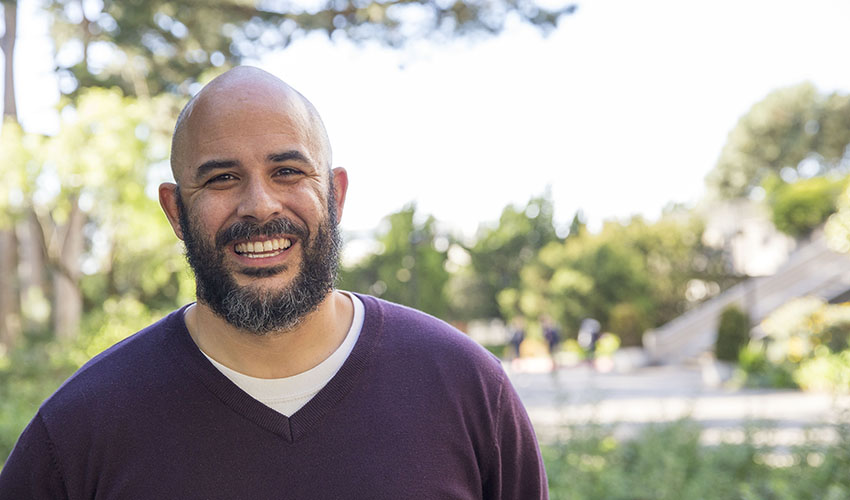Biologist receives NSF CAREER grant to explore asymmetric cell division

Blake Riggs, assistant professor of biology, has received a National Science Foundation CAREER grant to study assymetrical cell division in fruit flies.
An SF State biologist has received a prestigious National Science Foundation (NSF) CAREER grant to explore how cells select their fate through unequal cell division in fruit flies -- and the effect such "asymmetrical divisions" can have on the development of the fly and other animals, including humans.
The project, led by Assistant Professor of Biology Blake Riggs, will look at the asymmetrical division of the Endoplasmic Reticulum, an inner component of a cell that is responsible for making and secreting proteins. The information will help researchers understand the mechanism and signal driving these unequal divisions and the role that they play in determining a cell's ultimate fate -- what type of cell it will become and its function -- and its implication for an organism's health.
At the same time, the project aims to broaden participation in the sciences by developing a peer mentoring program for underrepresented minority students conducting the research. It will also bring cell biology into K-12 classrooms through partnerships with local schools and other organizations.
"This will be primarily student focused," Riggs said. "They will do the research, they're going to learn the techniques. One of the things I think we do here at SF State better than at other places is we train the next generation of scientists."
The $789,401 grant runs through November 2020. CAREER grants are awarded annually to faculty early in their careers who find innovative ways to integrate research and education. Past winners from SF State include Professor of Biology Kimberly Tanner, Associate Professor of Mathematics Federico Ardila, Professor of Mathematics Yitwah Cheung, Associate Professor of Earth and Climate Sciences Mary Leech and Professor of Biology Diana Chu.
The Endoplasmic Reticulum is one of many "organelles" that make up an individual cell. Past research from Riggs' laboratory has shown that, even before a cell has determined its ultimate fate, the Endoplasmic Reticulum is split unevenly when the cell divides. By introducing a bioluminescent protein into fruit flies, Riggs and his students will be able to track the behavior of the organelle, live, under a microscope, shedding insight on the complex way in which cells develop early in their life.
"Watching it as it happens -- that's the kind of science I like to practice," he said.
The research could also have important health implications, Riggs said. Many neurological disorders can be traced to mutations that occur early in cell development. The fruit fly is a "model organism," meaning researchers can add or change its genes to learn how such modifications may affect humans.
"There are 178 out of 287 known disease-related genes that are similar between human and the fruit fly," Riggs said, including genes related to cancer, Down syndrome, alcoholism and drug addiction. "We've learned a ton just from the little fruit fly."
Helping to increase diversity in the sciences will also play a big role in the research. A portion of the grant will go toward restarting and expanding an undergraduate mentoring program that pairs upper- and lower-division underrepresented students to ensure that the latter have the support and resources they need to succeed.
"We've seen a lack of retention of underrepresented minorities in science, especially African-Americans, and a lot of times this is due to social isolation, a lack of belonging or a lack of belief in their science identity," Riggs said. "There is a lack of mentoring with these students, and there's been a big push to address that."
But the project won't stop with undergraduate students. Riggs plans to look for ways to partner with San Francisco schools and other organizations so that the students can, in turn, bring science and mentorship to underrepresented K-12 students.
"There have been a bunch of studies that show that if underrepresented students are connected to the community, they do better in their research and studies," he said. "We need to embrace that, let our students do that, bring kids into the lab to show them what we do here."

This confocal microscope image shows a cell dividing in a fly embryo. Green is the Endoplasmic Reticulum, and red is DNA.